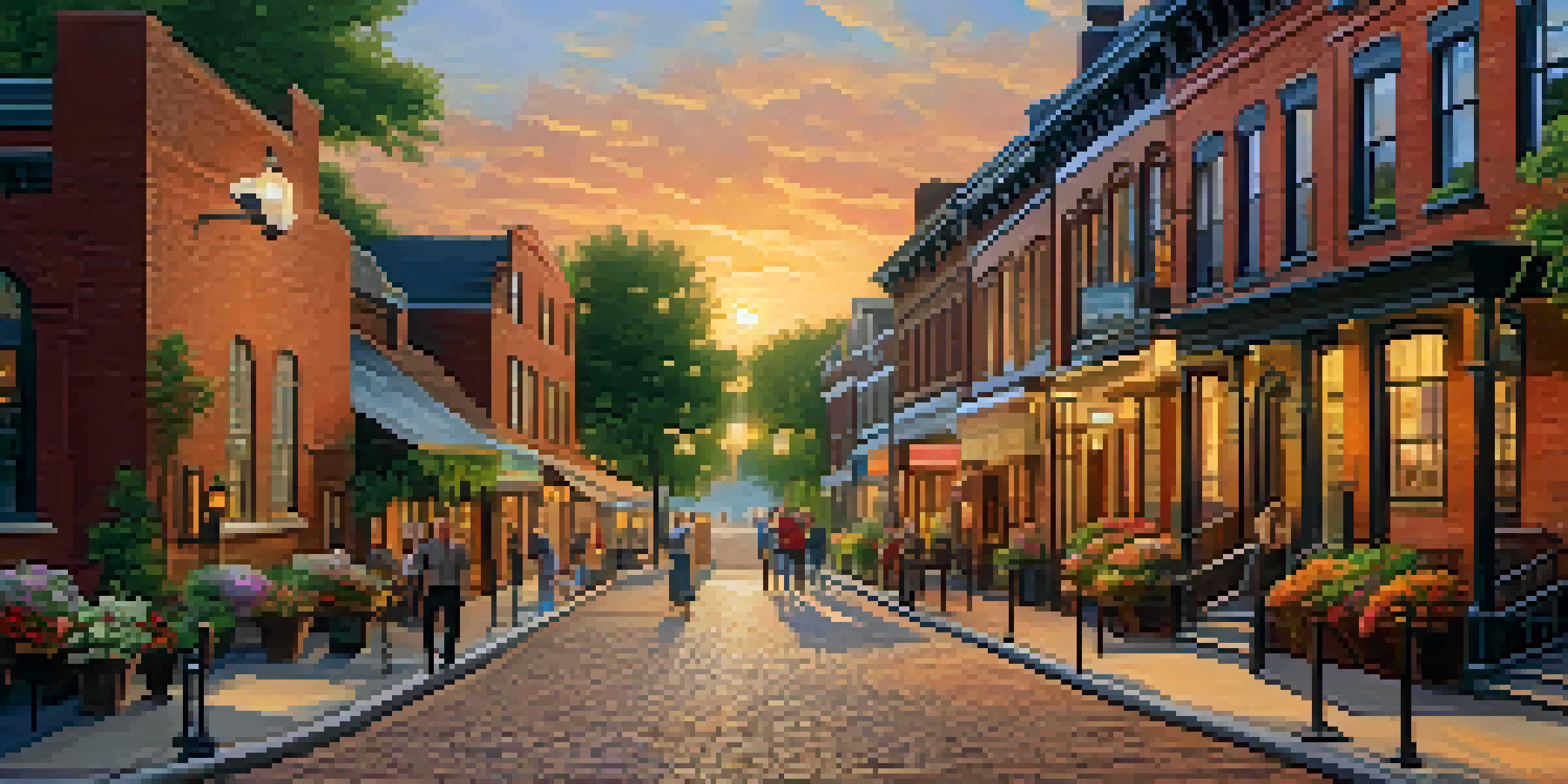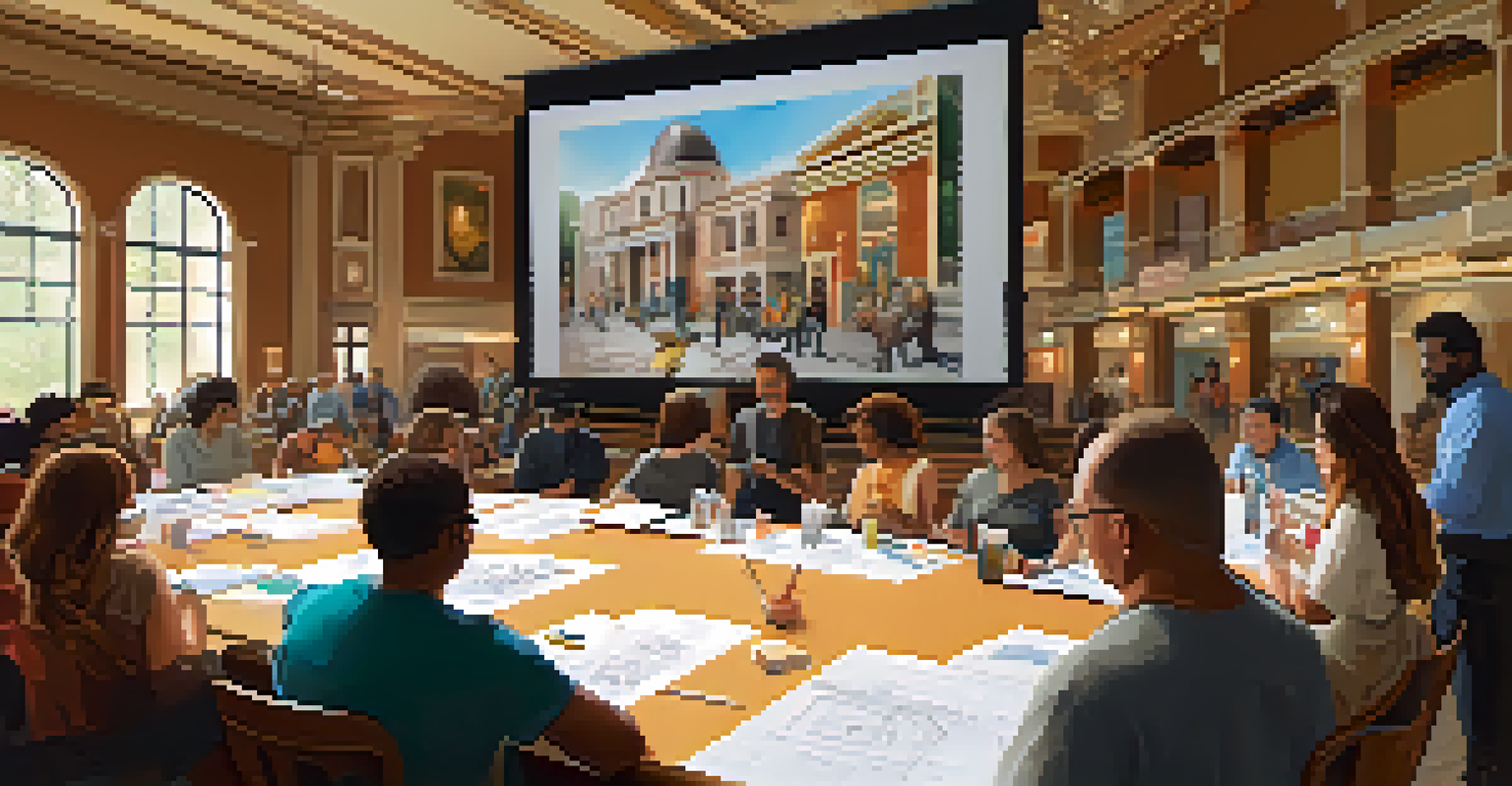The Impact of Historical Preservation on Community Identity

Understanding Historical Preservation and Its Importance
Historical preservation refers to the process of maintaining and protecting buildings, sites, and artifacts that have historical significance. By safeguarding these elements, communities can retain a sense of their past, which is essential for cultural identity. This practice not only enriches the local narrative but also allows future generations to connect with their heritage.
Preservation is a form of empowerment, enabling communities to tell their own stories and shape their own identities.
For instance, a preserved historic district in a city often becomes a focal point for community activities, celebrations, and tourism. It serves as a living museum, where residents and visitors alike can learn about the area's history. When people engage with these spaces, they develop a shared understanding of their roots, leading to a stronger community bond.
Moreover, historical preservation can stimulate local economies by attracting tourists and fostering small businesses. When communities invest in preserving their history, they create a unique identity that’s appealing to visitors, making it a win-win situation for both cultural and economic growth.
Historical Preservation as a Tool for Community Engagement
Preserving historical sites often brings local residents together, fostering a sense of ownership and pride. When people participate in preservation efforts, they not only save physical structures but also build relationships with their neighbors. This communal effort can pave the way for greater civic involvement and collaboration on various community projects.

Take, for example, a community organizing to restore a historic theater. This project can unite diverse groups—artists, historians, and local businesses—each contributing their skills and perspectives. As they work together, they develop a shared purpose, reinforcing community ties and creating lasting friendships.
Historical Preservation Builds Community
Engaging in historical preservation fosters a sense of ownership and pride among residents, strengthening community bonds.
Furthermore, these preservation initiatives can educate the public about local history, leading to a deeper appreciation of the community's identity. Workshops, tours, and events centered around historical sites can spark conversations about the past, helping residents to recognize the value of their collective heritage.
The Role of Storytelling in Historical Preservation
Storytelling is a powerful aspect of historical preservation, as it helps to weave together the narratives of a community's past. Each preserved site or artifact carries stories that reflect the experiences, struggles, and triumphs of those who came before us. By sharing these stories, communities can keep their history alive and relevant.
History is not a burden on the memory but an illumination of the soul.
For instance, a local museum might host storytelling events where residents share personal anecdotes related to a particular historical site. These stories not only enrich the visitor experience but also encourage younger generations to engage with their heritage. When history is presented through personal narratives, it becomes relatable and meaningful.
Moreover, storytelling can inspire future preservation efforts by highlighting the importance of maintaining cultural landmarks. When community members see the value in their stories, they are more likely to advocate for the protection of historical sites, ensuring that their identity continues to thrive.
Challenges Faced in Historical Preservation Efforts
While historical preservation brings many benefits, it also faces significant challenges. Funding is often a major hurdle, as restoring and maintaining historic sites can be costly. Communities may struggle to secure financial support, leading to the deterioration of important landmarks that hold cultural significance.
Additionally, there can be conflicts over which sites should be preserved and how to balance modern development with historical integrity. Some community members may prioritize new projects that promise economic growth, while others advocate for preserving the past. These differing perspectives can create tension within the community.
Economic Growth Through Preservation
Investing in historical sites stimulates local economies by attracting tourists and increasing property values.
Lastly, the preservation process itself can sometimes overlook the voices of marginalized groups whose histories may not be represented in mainstream narratives. It's essential for communities to strive for inclusivity in their preservation efforts, ensuring that all voices are heard and that the full tapestry of history is celebrated.
The Economic Benefits of Historical Preservation
One undeniable impact of historical preservation is its positive effect on local economies. When communities invest in their historical sites, they often see an influx of tourism, which can provide a substantial boost to small businesses. Restaurants, shops, and hotels benefit from visitors eager to explore the area's heritage.
Moreover, preserved historic areas can increase property values, making neighborhoods more attractive to potential homeowners and investors. People are often drawn to the charm and character of historic buildings, which can lead to revitalization efforts in surrounding areas. This economic growth can further enable communities to invest in their preservation initiatives.
Additionally, many cities have recognized the economic potential of historical preservation and have created tax incentives and grants to encourage such efforts. These financial tools not only support preservation projects but also stimulate job creation, benefiting the community as a whole.
Community Identity: A Reflection of Historical Preservation
The essence of community identity is deeply intertwined with historical preservation. When communities actively engage in preserving their history, they cultivate a unique identity that distinguishes them from others. This sense of identity can foster pride among residents, who feel connected to a shared narrative.
For instance, towns that celebrate their history through annual festivals or events often see increased participation from residents. These gatherings create opportunities for community members to come together, celebrate their heritage, and strengthen their bonds. The shared experiences contribute to a sense of belonging that is foundational to community identity.
Storytelling Keeps History Alive
Storytelling enriches the preservation process by connecting personal narratives to historical sites, making history relatable.
In turn, a strong community identity can lead to greater resilience during challenges. When residents feel a deep connection to their history, they are more likely to come together to support one another, reinforcing the social fabric of the community.
The Future of Historical Preservation in Communities
As we look to the future, the role of historical preservation in shaping community identity will continue to evolve. With advancements in technology, new methods of preservation and storytelling will emerge, making history more accessible to everyone. Virtual reality tours or digital archives can help connect people with their heritage in innovative ways.
Additionally, as communities become more diverse, the narrative around historical preservation will need to adapt to reflect a broader range of experiences. This inclusivity will enrich the historical tapestry, allowing for a more comprehensive understanding of community identity.

Ultimately, the future of historical preservation lies in collaboration. By bringing together residents, local governments, and organizations, communities can create a sustainable approach to preserving their unique identities and ensuring that their stories are told for generations to come.